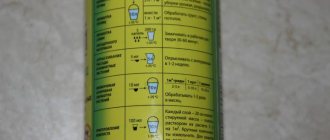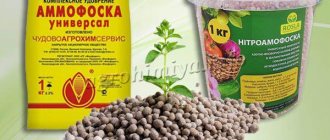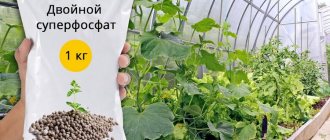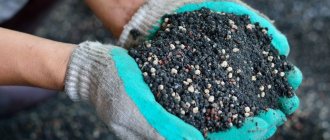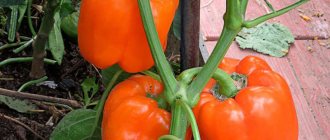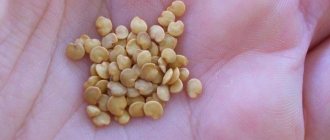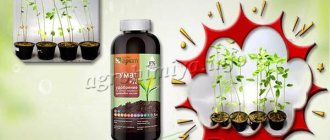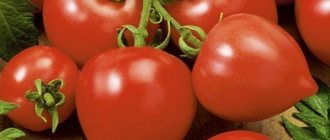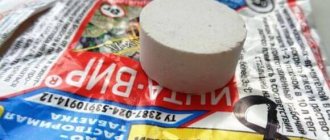One of the products intended for foliar feeding is Kristalon fertilizer. Its special demand among agricultural producers is explained, first of all, by the fact that when foliar feeding is carried out, nutrients penetrate into the plant through the leaf blades within a short time, feeding it with useful elements. After just 1-2 days, you can notice the positive results of the fertilizer.
Crystalon is a universal fertilizer, which means that it can be applied to almost all types of plants.
Types of connections
Indisputable advantage:
- In a huge range of compositions, each of which can be selected for all plant occasions. They are easy to use not only for professionals, but also for amateur gardeners.
- Convenient packaging of different weights and volumes, which contain either dry substance in granules or liquid gels.
- Without exception, all fertilizers dissolve well in water. And most importantly, the nutrients contained in them are in a form accessible to plants. It's called chelate. This means that when it gets into the soil, the fertilizer retains its beneficial properties even after it has undergone biochemical treatment with soil salts and microorganisms.
The role of chelates in plant nutrition
They are organic compounds of simple composition. In the natural environment, they easily and quickly break down into oxygen, hydrogen and carbon. Their value lies in the fact that when exposed to certain conditions, they form a ring around other substances, forming new chemical bonds. Thus, a stable form is obtained, called a chelate. It is in this state that nutrients are well preserved in the soil and are easily absorbed by plants.
Chelated Fertilizers vs Regular Fertilizers (click to expand)
When regular fertilizer is used, some of it dissolves in soil moisture and goes into the lower layers of the soil. The other part reacts with soil chemicals, forming new compounds that are not beneficial to plants.
The soil may contain the necessary nutrients, but they are in a form that is harmful to plants.
Example ⇓
- There are many Fe(III) compounds in soil, and plants need an element with the valence of Fe(II). It is he who takes an active part in photosynthesis. Often, fertilizers contain iron in the required form, but when it gets into the soil, it turns from a divalent ion into Fe (III), and becomes a poison for plants.
Chelates do not allow compounds to change their original state, surrounding them with a kind of shell.
Properties of chelated fertilizers
The principle of chelation is to increase the activity of biological elements, the ability and speed of their penetration through plant cell membranes. All substances in chelate fertilizers are in mobile form.
This allows:
- increase the rate of entry of substances directly into the plant body;
- reduce the consumption of mineral fertilizers;
- increase the immune functions of crops;
- accelerate the survival and adaptation of seedlings in a new place;
- prevent the development of diseases.
Classification of Crystalon by purpose
The range of fertilizers is so large that for convenient use they are distributed by type of impact and color coded.
Description of types ⇓
| Type and color | Compound | Purpose |
| Universal – green | NPK 18:18:18 + ME | For spring feeding of all plants on all types of soil. |
| White | NPK 13:5:26 + ME | Improves flowering of vegetable, ornamental and fruit plants. |
| Red | NPK 12:12:36 + ME | For root vegetables. |
| Pink | NPK 7:12:36 + ME | Serves as a complement to universal fertilizer on thin soils poor in magnesium. |
| Brown | NPK 3:11:38 + ME | Used to maintain all plants during dry periods, as well as to prepare plants for winter. Often used in the second half of summer and autumn. |
| Orange | NPK 6:12:36 + ME | The composition is intended to strengthen the ovaries of vegetable crops. |
| Yellow | NPK 13:40:43 + ME | Used on heavy clay soils together with “Universal” or instead of it. |
| Blue | NPK 19:6:20 + ME | Used in spring to stimulate green mass growth and root formation. The fertilizer is recommended for vegetable root crops. Add together with “Universal” or use as a separate composition. |
Read more about the effective combination of different types of “Crystalon”.
Methods of application
The dosage of the drug is selected depending on the feeding technology.
As a rule, the relevant information is indicated on the packaging. For seedlings, the method of using Kristalon fertilizer should be complex, since young plants really need nutrients and a balanced mineral composition. The yellow type of the drug is used to strengthen the root system of crops. White is used to process home flowers without the use of artificial light. If indoor plants are illuminated artificially, then it is better to give preference to the blue variety of Crystal. The red product is used in low light and high temperatures.
Feeding scheme for vegetable crops. Norms and deadlines for depositing
For growing seedlings
Broad-spectrum fertilizer for pre-planting soil preparation.
“Kristalon” is recommended to be used in the following order:
- Green – when preparing plant substrate for sowing seeds;
- Yellow – second and third feeding after picking;
- Blue – used for additional illumination;
- White works better at a temperature of + 180 with natural light;
- Universal is more suitable at + 180 – + 220;
- Red – has maximum effect at + 250 and above. A slight lack of lighting is allowed.
Important! For all types of fertilizers when growing seedlings, a solution of 2 g per 1 liter of water is recommended. Fertilizing is alternated with regular watering - three irrigations, the fourth session - replenishment. The frequency of use of "Kristalon" is 7 - 10 days.
For vegetable and legume crops in open ground
| Plant name | Fertilizer type | Payment deadline | Consumption rate in g per 10 liters of water |
| Potato | Yellow | When shoots grow to 12–15 cm, but before flowering begins. | 20 g Add 0.5 liters of the prepared solution to each bush |
| Brown | During flowering and immediately after it, with an interval of 12 - 15 days. | ||
| Tomatoes, Eggplants, Sweet pepper | Blue | Before flower buds bloom – 1 time | 15 – 20 g |
| White | After flowering during the period of ovary formation. 1 – 2 times with an interval of 10 days. | 20 – 40 g | |
| Red | From the appearance of the ovary to the change in color of the fruit to its characteristic color. Every 2 weeks. | 20 g per. For one plant – 400 – 500 ml of solution. | |
| Brown | Until fully ripe. | ||
| "Tomato" | February, March, April - from growing seedlings to rooting in open ground every 7 - 10 days. | 10 g | |
| cucumbers, Zucchini, Patissons, Pumpkin, Melon. | “Cucumber” is a special composition developed for pumpkin and melon crops. | It is applied at all stages of cultivation. With a frequency of 7 – 10 days. | 10 – 15 g |
| Carrot, Beet, Turnip, Celery | Green or "Special" (NPK+Mg 18:18:18:3) | It is added to the soil when the above-ground part of the plants reaches 12–15 cm. | 15 – 20 g Watering with the prepared solution 1 – 1.5 l per 1 m/p. |
| Brown | During the formation of root crops, but no later than a month before harvest. The interval between feedings is 15 – 20 days. | 20 – 30 g | |
| Bulb onions | "Special" | Foliar feeding 4 - 6 weeks after feather germination. Repeat feeding at intervals of 2–3 weeks, but no later than 30 days before digging the onions. | 10 g |
| Cabbage | |||
| Legumes: Green beans and asparagus, Peas, Beans | Yellow | When the mustache grows. | 20 g |
| "Universal" | When the pods appear. |
For feeding fruit trees and berry bushes
- The first feeding of a pink bud with “Brown” Crystal . Fertilizer is applied in the spring in dry form, after cleaning the trunk circles from last year's dry leaves. Based on 20 g per 10 m2 area. This amount is enough for one mature tree with a crown diameter of 8 m.
- After flowering and immediately after it, use a “Universal” solution of 10 g per
10 liters of water for foliar feeding of the crown.
Tip #1 . Note! Foliar nutrition is carried out no earlier than 2 weeks after treating plants with means of protection against diseases and pests.
For conifers
Crystal "Yellow" contains the largest amount of phosphorus, which is necessary for photosynthesis, pigment formation, starch formation, sucrose, and glucose.
This type is recommended for all fruiting crops and flowering plants. Plants in this category react negatively to excess nitrogen compounds. If the growth of green mass is forcibly stimulated, the plants weaken and become vulnerable to diseases and pests. Among the Kristalon assortment there is a special composition intended for conifers and evergreens.
Fertika fertilizer “Kristalon – Coniferous” is sold in 10 ml ampoules or 500 ml bottles.
To prepare the working solution, the following proportion is recommended:
- 10 ml (capacity of one ampoule) per 1 liter of water.
The timing of application to the soil is from May to August with a frequency of 10–14 days.
For flower garden plants
Crystal "Red" has a high potassium content. It is used on soils poor in this element, and also serves as a protective agent against diseases. Fertilizer helps plants cope with short-term drought.
- The composition NPK+Mg – 8.8:7.8:1:1.3 promotes active growth of leaves and stems, and also ensures abundant flowering with bright colors.
They begin to apply after the growth of the ground part of perennial crops or the complete rooting of annuals.
- The dosage of the nutrient solution is 10 ml per 1 liter of water. Fertilizing is used during the entire growing season with an interval of 10 - 14 days.
Composition of the nutritional mixture
In appearance, the fertilizer resembles crystals and dissolves well in water without forming sediment. Includes:
Plants at each stage of development need different elements. For example, in the spring, when green mass is actively growing, nitrogen is most needed. During flowering and fruiting - phosphorus and potassium. Therefore, the composition is formed in such a way that at any time of the year you can buy Crystal, which corresponds to the stage of development of the culture.
Saturation occurs quickly, especially if used for foliar feeding. According to reviews, Kristalon fertilizer tidies up the appearance of the plant in 2–3 days.
General recommendations from a specialist
- Fertilizers dissolve in water without sediment; for a quick and high-quality solution, it is better to use warm water – + 300 – + 350.
- Follow dosage recommendations for different crops and seasonal care.
- For foliar feeding of stems and leaves, prepare a solution whose concentration is 3 times less than the root feeding. For example, if the saturation of the main composition is 20 g per 10 liters of water, then to spray the leaves the same amount is dissolved in 30 liters of water.
- For fertilizing greenhouse crops, the application rate is halved. That is, they take not 20 g per 10 liters, but only 10 g.
Jari Aaltonen is a leading expert.
Review from an experienced gardener
Violetta Alexandrovna (Bagryanoye village, Moscow region)
On my plot among pine trees on acidic sand, the vegetable garden grows poorly. Since I started fertilizing with Kristalon, the yields have increased noticeably.
Crystalon is a fertilizer that is suitable for most plants, since all the components inside it are in chelated form. This means that microelements are combined with an organic shell, thanks to which the root system absorbs nutrients faster. The consumption of chelated fertilizers is always less than that of conventional salt forms of complex mixtures, most of which are not absorbed at all.
Kristalon fertilizer is a good tip for novice gardeners or house plant lovers. Thanks to the variety of species, you can choose a fertilizer for a specific plant or garden crop.
There are instructions for each, but even if the dosage is slightly exceeded, there are no problems, since the nutritional components are absorbed in the right quantities - this is the advantage of chelated fertilizers.
Advantages and disadvantages
Thanks to the special production method, the nutritional mixture has a number of advantages:
- reduces the amount of chemicals in vegetables - the fertilizer itself does not accumulate in the fruits, which makes them safe for consumption;
- economical use;
- fertilizing in early spring protects plants from night frosts and daytime temperature changes;
- the use of crystallon makes it possible to grow flower products that last a long time when cut, vegetables have a long shelf life and high nutritional value;
- the supply of nutrients is balanced, as a result of which chemical reactions proceed faster, crops develop better and bring greater yields;
- you can feed with crystallon once every two years;
- combined with organic fertilizers, as well as salt-based mineral mixtures.
